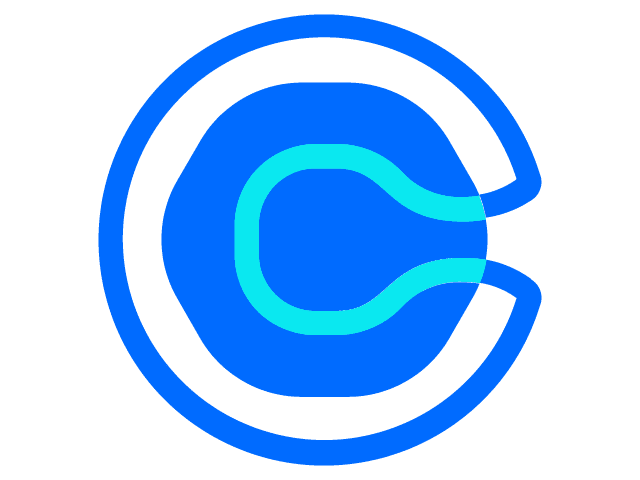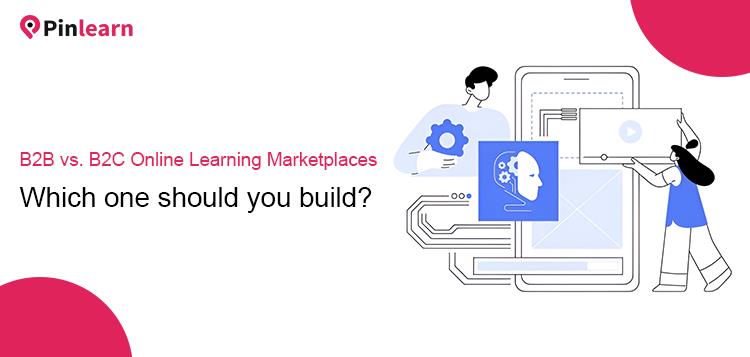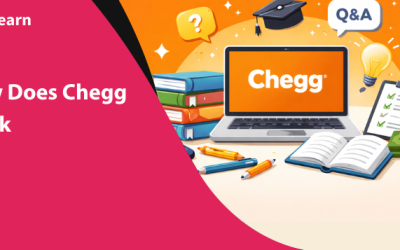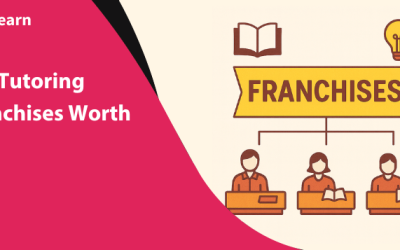B2B vs. B2C Online Learning Marketplaces: Which One Should You Build?
You have made the important decision to establish your online learning business. But you are confused whether to build a B2C or a B2B online learning marketplace. While B2C has mass appeal and helps you attract a large audience, B2B offers a curated solution for upskilling & reskilling.
Then, there are industry leaders like Udemy and Coursera who have nailed both approaches with equal ease. Depending on whether you wish to democratize education or train the workforce, you can choose the right business strategy.
In this blog, we pull in a detailed comparison of B2C vs. B2B online learning marketplaces to make better-informed decisions in your entrepreneurial journey!
So, let’s find the perfect strategy for your business!
Building B2B vs. B2C Online Learning Marketplaces: Key Differences
1. Target Audience
B2C Online Learning Marketplace
You’re selling courses to individual learners, including students, career professionals, and hobbyists. People typically join to enhance their knowledge, skills, better career opportunities, or personal interests. Segmentation often happens based on learning goals, career change, demographics, & psychographics.
A clear understanding of the B2C audience leads to increased engagement, higher conversion, and customer retention.
B2B Online Learning Marketplace
Here you’re selling courses & training programs to corporates, educational institutions & universities, or government agencies. This often involves large partnerships, huge contracts, & big-budget projects. Creating a B2B online marketplace often involves multiple stakeholders, like educators, SMEs, employees, investors, management, etc.
If you’re outsourcing your content, you need to consider third-party vendors or partners. Understanding the learner persona of the B2 marketplace is often challenging & demands deeper relationships.
2. Monetization Streams
B2C Online Learning Marketplace
B2C online learning marketplaces typically monetise from one-time purchases, subscriptions, freemium purchases or ads. Obviously, it depends on your platform’s business model & revenue-sharing strategy.
For example, Udemy follows a commission model where instructors earn a percentage of the revenue from the course sales. The primary revenue stream is pay-per-course and subscriptions for its B2C customer segment. Take a look at our detailed guide on how to create a website like Udemy!
Another example is Skillshare, which offers a subscription model and earns from monthly and annual subscriptions.
B2B Online Learning Marketplace
On the other hand, B2B online learning marketplaces like Udemy Business monetise from corporate subscriptions for bulk course purchases. Now these subscriptions could be tiered based on the number of team members: from a team plan to an enterprise plan covering the entire organisation.
The enterprise plan typically includes integrations, customised learning paths, analytics, and compliance tracking.
Let’s summarize the B2B online learning marketplaces’ monetization streams:
- Subscriptions are tiered and priced based on (per-seat or number of users)
- Revenue sharing from course sales
- White-label course packages
- Custom learning programs tailored to your business
- Corporate sponsorships & partnerships
3. Pricing Model
B2C Online Learning Marketplace
Pricing is a key point of distinction between B2B and B2C learning marketplaces. The perceived value, competition, audience needs, and course quality significantly vary for both types of marketplaces.
B2C learning marketplaces typically focus on volume and accessibility. Hence, they typically rely on pay-per-course, monthly or annual subscriptions, and freemium (upsells & bundles) pricing models. The pricing is limited to low-cost course offerings with emphasis on conversions & retention. Typically, the course price ranges between $10- $500 per course.
B2B Online Learning Marketplace
B2B online learning marketplaces focus on winning large-scale contracts & building authority. The common pricing strategies include per-seat, tiers, bulk course licensing, and value-based pricing. Other pricing strategies include content-based/ course-based pricing, where businesses opt for specific course categories, modules, and niches based on business needs.
Factors like development costs, competitor prices, customer value, and target audience influence the pricing model.
4. Feature Set
B2C Online Learning Marketplace
The core focus of B2C online learning marketplaces is on capturing new users, accessibility, engaging, and retaining them. For instructors, the marketplace focuses on seamless course creation & distribution tools.
Easy user login or registration, course catalog, search & filtering, secure payment gateway and mobile optimization are essential features for B2C marketplaces. Engaging UI/UX and intuitive navigation reduce the learning curve. Advanced features include discussion forums, gamification, social features, and microlearning modules.
B2B Online Learning Marketplace
Unlike B2C, the focus is on scalability, customisation, analytics, and, of course, ROI. Most businesses need training programs tailored to their business needs and team size.
Seamless onboarding, engaging UX, robust dashboards & analytics, security & compliance tracking are essential features here.
The key metrics include engagement, learning progress, and assessment scores. Multi-language support is another aspect when scaling new markets and regions.
5. Sales cycle
B2C Online Learning Marketplace
The B2C sales cycle is typically shorter, from minutes to a day. Unlike B2B sales, B2C learning marketplaces sell directly to the consumer, hence the time involved to make the decision is less. This leads to shorter sales cycles.
The pricing of courses on the marketplace is often low, hence the purchase decision is often impulsive. The sales cycle typically includes lead generation, customer engagement, and conversion; everything happens within a short time. These marketplaces include upselling strategies like bundles & subscriptions to promote courses.
B2B Online Learning Marketplaces
In contrast, B2B online learning marketplaces tend to have longer sales cycles for 3-12 months. The key reason for this is that multiple stakeholders are involved in the purchasing decision. For example, buying a corporate learning software needs the involvement of the L&D manager, corporate learners, designers & course creators.
The marketplace cost is another stumbling block influencing the decision-making. An extensive budget of thousands of dollars and long contracts demands afterthought & planning. The sales cycle starts from discovering the marketplace and evaluating demos & pilot programs to negotiating pricing and the final payment & implementation.
The complexity of the marketplace makes the decision more nuanced and consumes more time.
6. Marketing & Growth Drivers
The last differentiator factor in B2C vs.B2B online learning marketplace is marketing & growth strategies.
B2C Online Learning Marketplace
B2C online learning marketplaces focus on engagement, long-term retention, and storytelling. Paid ads, email marketing, content & blog marketing, affiliate marketing,& upselling are common marketing strategies.
Marketplaces like Udemy incorporate Deals programs, offering courses at discounted prices always. The discounts even range from around 50-90% significantly reducing the course prices from the list price.
These marketplaces leverage paid advertising on Meta Ads, Google search ads, and social media for a broader reach.

B2B Online Learning Marketplace
B2B online learning marketplaces focus on longer buyer journeys and involve long sales cycles. Content marketing, email marketing campaigns, partnerships & alliances, and community-building are popular marketing strategies.
Besides, they also focus on customer success & advocacy strategies dedicated to analytics, reporting, or onboarding. Here, the focus is on showing clients that they can achieve ROI with their marketplace using customer success stories and testimonials.
Should you Build a B2B or B2C Online Learning Marketplace?
We have pulled in detailed comparison points of B2C and B2B online learning marketplaces. Struggling to decide which is the right business strategy?
Let’s summarize the points and make your decision easier:
Choose to build a B2C online learning marketplace if:
- Your target audience is primarily individual learners, including students, hobbyists, professionals, etc. Also, if you’re serving a large pool of learners.
- Your content involves trending skills, hobbies, creative skills, tech, and exam preparation resources.
- Focus is on quick conversions and volume of learners.
- You are planning to sell courses for low prices and embrace pay-per-purchase, subscriptions, or a freemium model
Choose to build a B2C online learning marketplace if:
- Your target audience is primarily corporates, educational institutions & universities. Your focus is on enterprise business & high-value contracts.
- You have expertise in corporate training or in how institutional training works.
- You’re expecting huge revenue and turnover from your marketplace.
- Planning to sell bulk courses, tiered pricing, or custom plans as per business needs.
Alternatively, you could come up with a hybrid approach, where you start with a B2C business and scale into the B2B arena after initial success.
Conclusion
The decision to build a B2C or B2B online learning marketplace is multifaceted. It depends on several factors, including expertise, target audience, revenue expectations, and revenue streams. Although both marketplaces bridge the gap between learners and instructors, their purpose & development approach are starkly different.
We have covered all the key aspects of B2C vs. B2B online learning marketplace comparison to make your decision easier.
Whether you’re planning to build a niche-specific course marketplace or a corporate training platform, Pinlearn offers a ready-made clone script to successfully scale your marketplace! Build your own brand with the white-labelled script that offers 100% control. Our script is highly customizable to fit your business requirements. Schedule a 15-minute free call to discuss your business idea with us!
FAQ-Related to B2B vs. B2C Online Learning Marketplaces
1. What are monetization streams for a B2C online learning marketplace?
Pay-per-course, subscriptions, certificates, freemium purchases, or bundles are key revenue streams for B2C online learning marketplaces.
2. Can an online learning marketplace adopt both B2C and B2B approaches?
Yes, you can adopt a hybrid approach and offer both B2C and B2B offerings for your online learning marketplace. Course marketplaces like Udemy and Coursera target both customer segments. Although they started initially with B2C, they have scaled into the B2B domain after the initial traction.
3. How do the pricing strategies differ for the B2C and B2B online learning marketplace?
B2C online learning marketplaces typically adopt pay-per-course, subscriptions, and freemium models. At the same time, B2B online marketplaces rely on corporate subscriptions, tiers, bulk licensing and customized learning paths.





